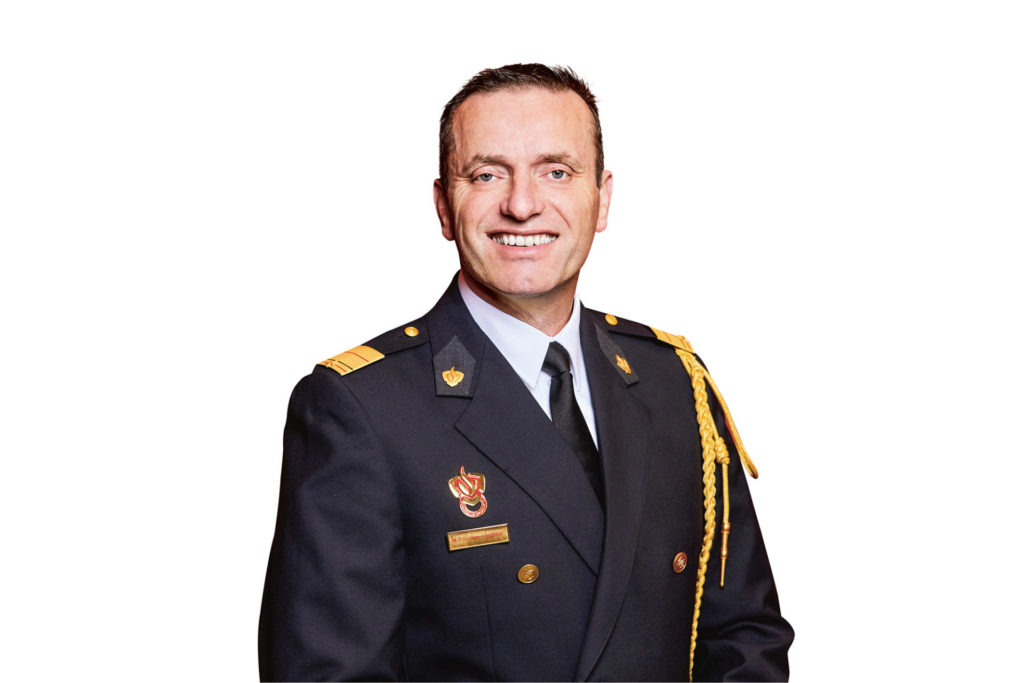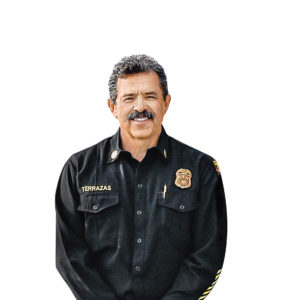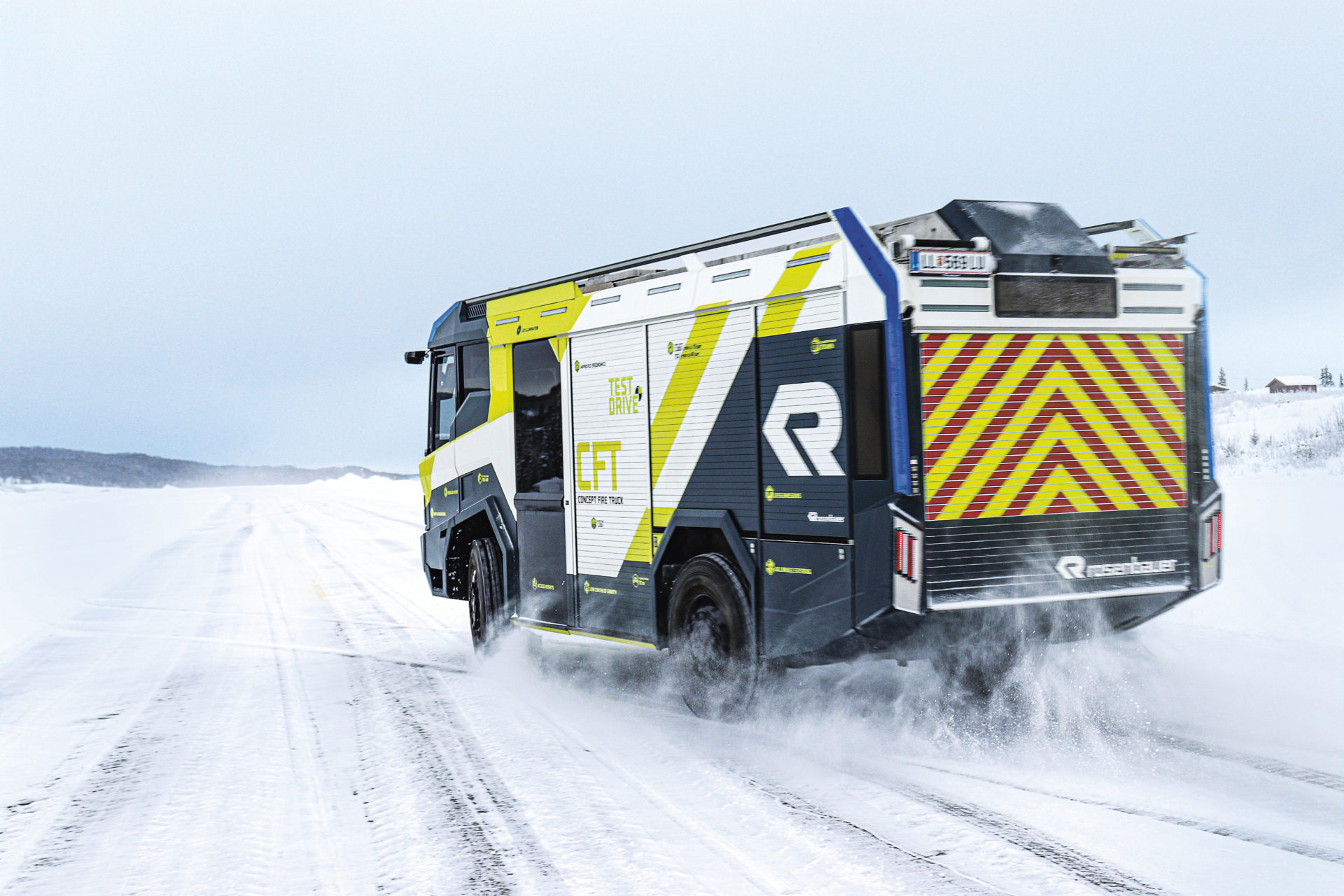▸ Next-Level CFT: First Customers
Next-Level CFT: First Customers
One of the largest development projects in the company’s history is gathering speed. The Concept Fire Truck (CFT) provides mature answers to the markets’ important questions and is being rewarded with an increasingly positive response.
Amsterdam, Berlin, Dubai, Los Angeles, Oslo, Portland – it is no coincidence that these cities and their firefighting organizations are among the first to purchase the CFT. They are all members of the C40 Cities Climate Leadership Group, an association of now almost a hundred cities across the world that have made an especially ambitious commitment to climate protection. Almost all C40 cities have recently passed laws and set deadlines for achieving climate-neutrality. For instance, according to its “Clean Air” action plan Amsterdam has passed a law that will ban trucks, buses and taxis with combustion engines from entering the municipal area from 2025. A similar ban on private cars with combustion engines will also come into effect in 2030. “This new fire truck might make us fit for the future”, said Tijs van Lieshout, commander of the Fire Department of Amsterdam-Amstelland. “The new possibilities of this range-extended electrical vehicle are appealing. We not only will have state of the art technology and real time information at our disposal. We also contribute to a better environment, since an electrical fire truck is a first step towards an emission-free fire department, our collective goal for 2030.”

“This new fire truck might make the fire department of Amsterdam-Amstelland fit for the future.”
Tijs van Lieshout
COMMANDANT BRANDWEER AMSTERDAM-AMSTELLAND
PERFECTLY POSITIONED
Technology partnerships aimed at promoting the development of a suitable CFT-based series vehicle have been launched with eight large rescue organizations – three in Europe, three in North America and one each in the Arab world and Southeast Asia. This takes one of the firefighting industry’s key flagship projects to the next level: trialling the electric firefighting vehicle in challenging, day-to-day operations. With the electric firefighting and rescue vehicle project starting 2021, the Berlin fire service will be the first to trial the vehicle, with pilot projects following in Amsterdam and Oslo. The concept vehicle will then be shipped to Australia a year later to be put through its paces by the fire service in Canberra and the Australian Capital Territory. These technology partnerships usually last for two years and help determine whether the vehicle concept is suitable for everyday deployment by municipal fire services and whether it could be a potential candidate for upcoming replacements. If this is the case, Rosenbauer is perfectly positioned: No other firefighting technology provider or vehicle manufacturer has so far unveiled a technologically comparable concept, nor will any be bringing an electric firefighting vehicle to market in the foreseeable future.
NO SUREFIRE SUCCESS, BUT ...
Fire services are understandably somewhat skeptical of an electric emergency vehicle based on a brand-new basic concept. Innovations always have to first prove themselves against tried-andtested technology, which can take a lot of persuasive effort. “Range anxiety” is a widespread concern that many people have with electric drive systems. On top of that are the challenges specific to fire services, such as the huge amount of energy required to operate firefighting pumps. Rosenbauer has been aware of these issues from the beginning, which is why it took the CFT on tour across Europe and overseas with the specific aim of giving fire services the opportunity to experience the benefits of the vehicle for themselves.
... IMPRESSIVE FEATURES
Their eyes lit up as soon as they sat in the CFT, where the firefighters could experience the technology up close and try out the myriad features that could potentially make their everyday work easier. When this revolutionary vehicle concept was showcased for the benefit of fire services in British Columbia at the end of January, “glowing reviews” were reported all over the Vancouver press. The fire service in Portland, Oregon, was also highly impressed, especially after seeing the vehicle in action at the Portland International Raceway. The acceleration alone of this 350 kW (475 hp) vehicle eclipses anything that firefighting vehicles have achieved in the past.
UNLIMITED ENERGY
Any concerns over range were also laid to rest when the fire services gained a more in-depth understanding of the technology behind the CFT. The vehicle is designed to manage most urban deployments purely electrically. In addition, the scene of deployment can be brightly illuminated with the CFT because it uses new, integrated and highly powerful LED headlamps to generate 300,000-lumen scene lighting that is around 20 times stronger than conventional systems. A range extender in the rear reliably and safely eliminates the risk of the electricity running out during a deployment. The six-cylinder diesel engine can, if necessary, ensure unlimited reserves of energy.
IMPROVED DRIVING DYNAMICS
It is not just the electric drive that constitutes the key difference with respect to conventional firefighting vehicles, but also the new vehicle architecture, which was made possible in the first place only by the alternative drive system concept. So thanks to its low center of gravity and even load distribution (50:50 over the front and rear axle), the driving dynamics of the CFT are superior to those of conventional firefighting vehicles (chassis with mounted body). The maximum permissible axle loads can also be utilized more effectively, which optimizes vehicle loading (up to one cubic meter of extra space) – a real boon for fire services.
HIGHLY MANEUVERABLE AND ERGONOMIC
The turning radius of the CFT is two meters smaller – and a full five meters (!) smaller with the all-wheel version – than stipulated by the EN1846 vehicle standard, which is a crucial benefit in densely built-up areas. The ground clearance can be adjusted for normal or off-road operation; at the scene of deployment, the entire vehicle can be lowered so that the entrance to the crew cabin is just 150 mm above ground level and personnel can access the harnessed equipment safely while standing on the ground. At the rear is a lifting platform designed to accommodate a remotely controllable crawler, which, with a load capacity of up to 750 kg, makes it easier to handle heavy equipment.
Based on the outstanding ergonomics and excellent functionality:
- Fewer injuries
- Highly efficient deployment teams
- Extended operational availability – reduced training costs
- Optimal technology – efficient and highly motivated emergency services

“There is nothing else like it in the world right now.”
Ralph M. Terrazas
FIRE CHIEF OF THE LOS ANGELES FIRE DEPARTMENT
STATE-OF-THE-ART COMMAND CENTER
In the CFT, the cockpit and crew cabin – which are normally separated by a partition wall – form one continuous cabin that can be used as a command center. The driver’s and commander’s seats can be turned around for mini-meetings and discussions during a deployment, while all the information required by the crew can be displayed on the central main control station. This is operated via touchscreens, with multiple functions combined to enhance user-friendliness. An already familiar example is the deployment scene button, which activates the hazard warning lights, front lights, scene lighting and truck-mounted pump at a predefined speed. The CFT is also fully connected and acts as a secure Wi-Fi access point.

WINTER TESTS
In Fagernes, Norway, tests were carried out to ascertain the handling of the CFT in snow and ice.
CONCEPT FOR ALL MARKETS
Also important is that the CFT technology improves the cost-effectiveness of the firefighting vehicle. This is due to lower maintenance costs, as a third less parts are installed in comparison with conventional vehicles, as well as to lower energy costs. Based on 90% electric operation, several thousands of euros can be saved with a performance of 10,000 km per year.
The CFT is capturing the imagination of rescue organizations around the world, inspiring them to think about what the firefighting vehicle of tomorrow should look like and how it should perform. Its technological basis covers all major global standards and legal conditions. And what’s more, the CFT is the first firefighting vehicle to secure the same amount of interest on both sides of the Atlantic, opening up the possibility of harmonizing European and American firefighting traditions. This is also confirmed by Ralph Terrazas, Fire Chief in Los Angeles: “I was able to experience the benefits of the Rosenbauer Concept Fire Truck for myself. It was a real joy. There is nothing else like it in the world right now. This vehicle has outstanding acceleration and brake performance – with zero emissions. It is equipped with a diesel engine that acts as a range extender for prolonged operations. We are looking forward to putting the new fire engine into operation at the Los Angeles Fire Department.”